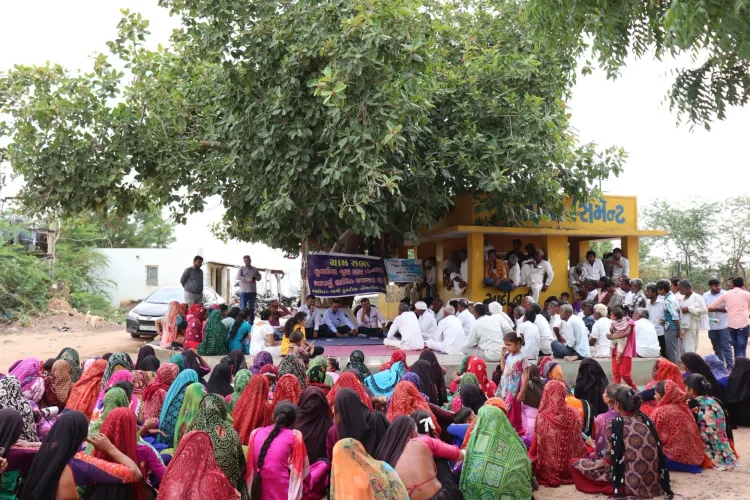How Does PAI Version 2.0 Facilitate Data-Driven Monitoring at Gram Panchayat Level?

Synopsis
The launch of PAI Version 2.0 marks a significant step towards empowering gram panchayats in India. With enhanced features and a focus on sustainable development, this tool aims to facilitate effective planning and monitoring in rural areas. Discover how this initiative transforms governance and promotes community growth.
Key Takeaways
- PAI Version 2.0 enhances data-driven planning at the gram panchayat level.
- Reduction of indicators from 516 to 147 improves usability.
- Focus on outcome-oriented indicators across nine LSDG themes.
- Auto-integration of data from national portals enhances efficiency.
- Engagement in hands-on exercises for effective implementation.
New Delhi, May 24 (NationPress) The Panchayat Advancement Index (PAI) Version 2.0 is designed to enhance capacities for data-driven monitoring and planning at the gram panchayat level, thereby fostering holistic, inclusive, and sustainable development in rural regions through Panchayati Raj Institutions, as stated by the government on Saturday.
The Ministry of Panchayati Raj is hosting a two-day ‘Writeshop’ on PAI Version 2.0 in the capital on May 26-27, which signifies the national implementation of PAI 2.0 for the fiscal year 2023–24.
PAI has been crafted as a comprehensive, multidimensional tool to evaluate and monitor the advancement of Gram Panchayats across nine themes in alignment with the Localized Sustainable Development Goals (LSDGs).
These themes encapsulate essential areas such as poverty alleviation, health, education, water sufficiency, clean environment, infrastructure, governance, social justice, and women’s empowerment.
While PAI 1.0 (FY 2022–23) acted as a baseline assessment tool, PAI 2.0 brings significant advancements based on comprehensive field experiences and feedback from stakeholders.
The ministry reports that PAI 2.0 offers a more precise framework by reducing the number of indicators from 516 to 147, which enhances data quality, simplifies reporting, and provides actionable insights.
The updated ‘Local Indicator Framework’ now prioritizes outcome-focused, measurable indicators across nine LSDG themes, allowing Gram Panchayats to efficiently monitor progress, prioritize interventions, and increase transparency in local governance.
Key enhancements in PAI 2.0 include the decrease of indicators from 516 in PAI 1.0 to 147 in PAI 2.0 for better usability and reduced reporting load; streamlined data points and themes focusing on quality; automatic integration of data from national portals of Union Ministries and Departments; and a user-friendly, mobile-optimized portal interface featuring enhanced dashboards and accessibility, among others.
Participants will engage in interactive group activities for portal configuration, data entry, validation, and the application of PAI outputs in planning.
On the second day, State and UT teams will share their experiences, discuss insights from the implementation of PAI 1.0, and demonstrate how they intend to leverage PAI 2.0 to strengthen Gram Panchayat Development Plans (GPDPs).





